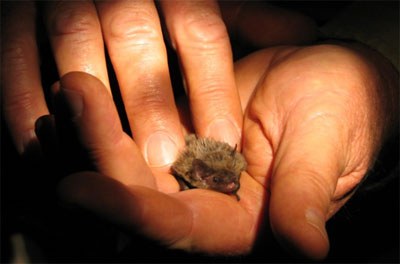Identification pointers
Small brownish bat with a greyish underbelly and semi-scruffy fur, but its colour is very variable, depending on the region in which it is found. Relatively small snout and mouth, with a dome-like forehead. Wing membranes are dark-coloured and the forearm length is about 29-38 mm. It only weighs between 4-10 grams. It has a small wingspan and appears to be almost playful in its flying behaviour when foraging.
Roosting habits
They live in small groups of up to about 20 bats, hiding away in any crevices in the roof found between corrugated iron sheets or brickwork. They are so small that many people aren’t even aware that this species is living in their house roof. They are unobtrusive in their roosting behaviour and in small numbers do not usually cause any damage to roofs or homes. They do however readily occupy a bat house.
Breeding
Females give birth only once a year to singles, twins, triplets or even quadruplets any time between October and November in the warm summer months8.
Food
Beetles, lacewings, moths, mosquitoes, plant-sucking bugs and whatever flying insects are available.






